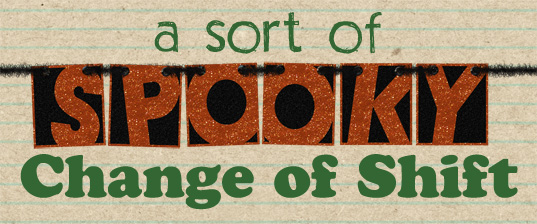One thing that Mr. Obama and I agree on regarding healthcare is that it is very important that our records go digital. We are never going to maintain the best healthcare in the world (yes, we have the best healthcare in the world... access may be limited, but technology, skill, and delivery are still in our corner) if we can't come up with some way to maintain consistant, accurate patient histories and medication records.
From that point on, we disagree about almost everything else, including how to implement the system and who should pay for it. But it is always nice to see areas where you agree.
Anyway, this isn't a political post, but rather a chance to spout off a few random thoughts about EMR systems. There are
a lot of systems out there, and many of them I've never used, so I'm not exactly an expert in the field, but here are a few that I have played with:
Where I am working now, we use the
FirstNet program from the
Cerner Millenium suite. It is alternately called ACIS, which I think refers to the whole hospital group of programs where FirstNet is the ER part or some such drivel. I can't speak on the nurse charting or physician order entry aspects of this software, as we only use it for the tracking board, secondary assessment capability, and lab interface. I suppose this is not the worst software out there, but I'm not overwhelmed by it. I appreciate how it interfaces with the rest of the hospital, and the medication reconciliation, while frustratingly slow, is actually fairly decent. But beyond that there are literally dozens of madening aspects to it, ranging from small to homicidal-ideation-inciting points that seem like they would be such no-brainer fixes (like why do we have to have a character limit in the free-text box for each system - so when I'm talking about abdominal tenderness and last oral intake and bowel tones and which shade of green that vomit was, I run out of room and have to start cutting things out or abbreviating or eliminating spaces after periods. Seriously, people, what's up with that?). Another thing that really frustrates me is trying to chart pain. When I chart on a paper chart, I can write
O - sudden
P - movement, pressure. no palliation.
Q - throbbing, burning
R - L arm
S - 8/10
T - 3 hours, intermittent pain
This takes me about 30 seconds to do, if that. But in Cerner, each field brings up its own individual pop-up window with checkboxes that rarely satisfy what I want to say (probably 80 percent of patients descibe their pain with throbbing or stabbing but neither of them are in the "quality" checkbox, for instance). Why I can't type in where the pain is located and then have 1 box pop up where I can simply enter the details all at the same time is beyond me. I know that this only takes an extra couple of minutes, but when I'm seeing anywhere from 5 to 30 patients in a shift, and stupid stuff like this takes an extra 5 or 10 minutes for each patient, it really adds up - especially when I have the doctor who writes for Dilaudid "every 15 minutes" on every patient who walks in the door (praise be for
carpujects).
I have used a couple other EMRs as well, including
EPIC from
Epic Systems, which has a number of really great features, and no huge drawbacks that I can remember, although I do remember being frustrated from time to time at a few things. I used it mainly in Peds and Family Practice as an LPN at a huge (40 or so doctors) comprehensive health clinic, and I really liked the way that everything was integrated into one fairly easy to use system with lots of automation and patient-friendly graphs. Patients could send e-mail messages through the system and doctors could reply and have the whole exchange automatically entered as part of the medical record. Messages could be sent electronically to different staff members. Medication refills could be sent straight to the doctor for approval and then sent back electronically. And a whole host of other really nifty features. I also spent a good amount of time in the same organization working in the Urgent Care Center. I found this system to be a little less intuitive for this use. Mainly, I think, because the triage entry seemed less intelligent and the nurses' notes came out in a reader-unfriendly format. although because physician order entry was electronic, to chart giving a medication involved checking a box for PO meds, and for IM or IV meds you just had to fill in a couple details. Also, you could see the tracking board either as a standard list, or as a layout of the department with rooms colored based on status, which made it easy to see at a glance what was going on.
Far and away the best feature, though - and the one that I miss sorely - is the "dot phrase" that Epic allows you to use. In medicine, we are constantly using the same or very similar phrases over and over, whether it be in charting or patient instructions or whatever. With Epic's dot phrases, you can enter a phrase one time (or choose from a large library of pre-entered phrases) and save it with a keyword. Then whenever you type a dot and then the keyword, such as .sleep the computer replaces that with your pre-determined phrase, such as:
patient resting quietly with eyes closed and even unlabored breathing
because everybody knows that nurses aren't qualified to determine if a patient is actually sleeping or not. Even cooler, is that if you include three asterixes in your original phrase, then this becomes an easily-editable part of the phrase. For instance, I could put *** after resting quietly, and then when it pops up in the charting, I can quickly go through the text and any time there is a *** it will highlight it and ask me what to replace it with, so I could put "on his back" or "on his right side" or "in the sink" and then move on. Even cooler, is that a lot of data from the patient's medical record can be called up in a similar fashion, so if I made a phrase such as:
.name is a .age .gender who complains of .cc for *** days. .he has allergies to .allergies and regularly takes .meds.
and saved it under the keyword .triage, then when I type that keyword, I will get something like this:
Braden is a 72 year old male who complains of nausea and vomitting for *** days. He (this phrase calls up the gender and puts the appropriate pronoun in place) has allergies to aspirin, ibuprofen, tylenol, and tramadol and regularly takes vitamin b12.
At that point, I hit the tab key (if I remember correctly) and it highlights my free text spot (the ***) and I can type what I want. And of course the whole thing can be edited, so if anything doesn't apply I can delete it or add what I want.
Needless to say (but I'm saying it anyway), this saves immense amounts of time, and makes it so that you can write all the lawyer friendly stuff (patient tolerate procedure well, for instance) without having to wear out your hands and take the time to write the same thing over and over again. I could chart a very thorough summary of crutch teaching, for instance, including documenting return demonstration, height of crutches and everything else, by just typing .crutch and then editing a detail or two. Boom, 15 seconds spent on what would otherwise take a minute. Multiply that times every patient encounter of the day, and perhaps you can understand why I miss this feature so much.
Okay, enough free advertisement for EPIC. Are you still reading? Good.
The other system that I have used is
Ibex PulseCheck from
Picis. I remember being impressed with it because it was so simple and straightforward. That said, there are very few specifics that I can remember to either praise or denegrate the program. One thing that I do remember liking, however, was that the background color of the screen could be modified based on conditions, so when there was a blue screen, that meant that things were going well and you could bring your own patients back, but when there was a red screen it meant that we were getting busy or had a lot of ambulances on the way, so only the charge nurse could assign patients to rooms. At the time I used this, I was an ER Tech, so most of my documentation consisted of charting blood draws, splints, EKGs and patient transports, so I really can't speak too much for how easy it is to do nursing assessments or med documentation on this system, though it seems that most of the nurses seemed to like it once they got used to it.
Another hospital I did clinical rotations at in nursing school used a DOS based system from the 1600s. I would rather engrave the medical record in stone tablets than go back to that hospital.
Anyway, each of these systems has really nice features and each has features that just make me scratch my head and wonder if anybody is really thinking this through. This gave me the crazy idea that I could come up with a good EMR, and since my brother is a computer programmer (who brings in almost 2.5 times my salary), maybe we could get something started and strike it rich. So I've been jotting down notes every time I think of something that I want in my EMR, and although I know deep down that it is an impossible dream, I keep getting excited at the idea of solving all of the worlds medical records woes.
So I told him about the idea the other day and he said that not only is it a bigger project than I realize, but it involves a school of programming that he is not interested in, and besides, a clause in his contract states that anything he works on while employed by Software Giant, Inc, becomes their property.
Oh well. Nice dream anyway.
So for all you intrepid souls who have followed me this far, what EMR do you use and what do you think of it?

 So earlier today, my wife made a funny face by using her tongue to make it look like she had a giant lip. I thought it would be funny to try to kiss her like that so I went in for the smoocharoo and... let's just say that this is a less-than-romantic way to kiss someone, so I turned away and said, "oh, so gross!"
So earlier today, my wife made a funny face by using her tongue to make it look like she had a giant lip. I thought it would be funny to try to kiss her like that so I went in for the smoocharoo and... let's just say that this is a less-than-romantic way to kiss someone, so I turned away and said, "oh, so gross!" I don't like to listen to too much Christmas Music. In fact I try to avoid it starting in late October when businesses start inundating us with it, and all the way up until just a few days before Christmas. Its not that I don't like to get into the Christmas Spirit and all, it is just that I get sick of the same songs repeatedly being beaten and tortured by greedy singers. Growing up, my Dad liked to listen to Neil Diamond and Barbara Streisand sing the Christmas standards. Both Jews. Fine, but I'm going to make a Rosh Hashanah album.
I don't like to listen to too much Christmas Music. In fact I try to avoid it starting in late October when businesses start inundating us with it, and all the way up until just a few days before Christmas. Its not that I don't like to get into the Christmas Spirit and all, it is just that I get sick of the same songs repeatedly being beaten and tortured by greedy singers. Growing up, my Dad liked to listen to Neil Diamond and Barbara Streisand sing the Christmas standards. Both Jews. Fine, but I'm going to make a Rosh Hashanah album. To my dear friends over in diagnostic imaging:
To my dear friends over in diagnostic imaging:




 Where I am at, most hospitals are unionized and you really don't have a choice about which union because if you want to work for that hospital, you have to work for that hospital's union.
Where I am at, most hospitals are unionized and you really don't have a choice about which union because if you want to work for that hospital, you have to work for that hospital's union.


 While I'm at it, I just checked my Google Analytics report and as of midnight, I have now had 25,006 visitors. I can hardly believe that this many people are really interested in reading my drivel, but please, read on!
While I'm at it, I just checked my Google Analytics report and as of midnight, I have now had 25,006 visitors. I can hardly believe that this many people are really interested in reading my drivel, but please, read on!


 I'm considering signing up for feedburner to increase my ability to be a stat nerd, but I've heard from some people that when you sign up for feedburner, it makes you commited to use the service because people then have to sign up for the RSS feed through their service and not through your native page anymore, but the reports seem to be conflicting.
I'm considering signing up for feedburner to increase my ability to be a stat nerd, but I've heard from some people that when you sign up for feedburner, it makes you commited to use the service because people then have to sign up for the RSS feed through their service and not through your native page anymore, but the reports seem to be conflicting.
 Really? After we have cleared her and proved that she can walk and has no neck or back pain? Are we trying to give her back pain? And she has a fractured mandible. Is it really the best idea to then put a c-collar on her. Protect the neck, sure, but have you ever noticed where the collar pushes against? I'll give you three guesses.
Really? After we have cleared her and proved that she can walk and has no neck or back pain? Are we trying to give her back pain? And she has a fractured mandible. Is it really the best idea to then put a c-collar on her. Protect the neck, sure, but have you ever noticed where the collar pushes against? I'll give you three guesses.


 But my love for all things Michael Crichton could not be satiated. I devoured each of his novels - many of them more than once - and watched all of the movies based on the novels. I waited with great anticipation each time for the next book to come out so that I could relish the masterful way that he mixes fascinating and strong characterizations with gripping story lines and compelling scientific thought. With enthousiasm, I read Airframe, The Great Train Robery, Prey, State of Fear, Timeline, Jurassic Park, The Andromeda Strain, Five Patients, A Case of Need, Sphere, The Terminal Man, Congo, Disclosure, The Lost World, and Rising Sun. I still have most of these novels sitting on my bookshelf at home, with well-worn corners and tattered covers from the many perusals. The only book I have not read was his last, and it is on my list of must-reads.
But my love for all things Michael Crichton could not be satiated. I devoured each of his novels - many of them more than once - and watched all of the movies based on the novels. I waited with great anticipation each time for the next book to come out so that I could relish the masterful way that he mixes fascinating and strong characterizations with gripping story lines and compelling scientific thought. With enthousiasm, I read Airframe, The Great Train Robery, Prey, State of Fear, Timeline, Jurassic Park, The Andromeda Strain, Five Patients, A Case of Need, Sphere, The Terminal Man, Congo, Disclosure, The Lost World, and Rising Sun. I still have most of these novels sitting on my bookshelf at home, with well-worn corners and tattered covers from the many perusals. The only book I have not read was his last, and it is on my list of must-reads. Any regular reader of my blog is aware of my support for John McCain for president and my fears of an Obama administration. It was obviously with some disappointment, therefore, that I watched the election results come in this evening. And now the moment that I have been fearing but expecting has arrived.
Any regular reader of my blog is aware of my support for John McCain for president and my fears of an Obama administration. It was obviously with some disappointment, therefore, that I watched the election results come in this evening. And now the moment that I have been fearing but expecting has arrived.


